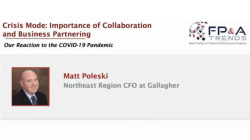The power of Finance Business Partnering enables Finance to step outside of their traditional Performance Management roles (setting budgets and reviewing actuals) in order to contribute to real value creation initiatives.
Simply put, spending more time working together is mutually beneficial for both Finance and the business.
But what is the best way to structure that relationship? Should Finance operate as an advisor, a consultant or perhaps even an investor?








